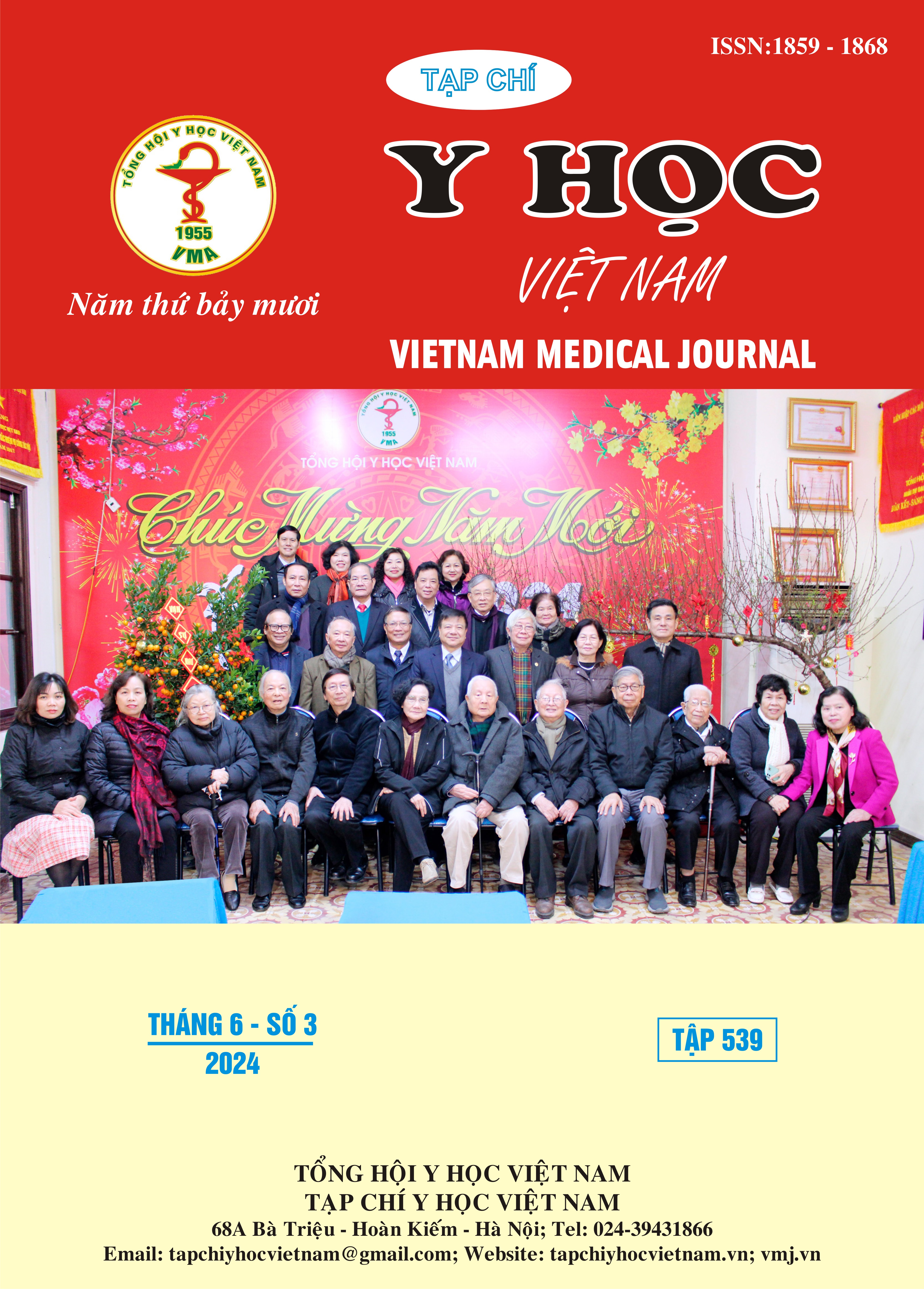SOME CHARACTERISTICS OF TUMOR MARKERS IN PATIENTS UNDERWENT LIVER RESECTION FOR ICC AT K HOSPITAL
Main Article Content
Abstract
Objective: To describe some characteristics of lymph node metastasis in patients undergoing liver resection for intrahepatic cholangiocarcinoma (ICC) at K Hospital. Methods: A retrospective descriptive study was conducted on 33 patients who underwent liver resection with hepatoduodenal ligament lymph node dissection for ICC at the Department of Hepatobiliary and Pancreatic Surgery, K Hospital, from October 2021 to December 2023. Results: The male-to-female ratio was 0.8:1; the mean age was 58.8 ± 11.1 years. Types of liver resection included 14 right hepatectomies and 19 left hepatectomies. CA 19-9 and CEA were elevated in 57.6% and 9.1% of cases, respectively. The majority of patients had only one tumor on abdominal CT (93.9%), with a mean tumor size of 5.18 ± 1.98 cm. Lymph node metastasis was present in 45.5% of patients. Patients in stage IIIB had the highest proportion (45.5%). Age > 60 years, gender, tumor size > 5 cm, type of liver resection, CA 19-9 level, satellite nodes, and tumor differentiation were not associated with lymph node metastasis (p > 0.05). There was an association between vascular invasion and lymph node metastasis (p = 0.026). Conclusion: Vascular invasion is associated with lymph node metastasis in patients undergoing liver resection for intrahepatic cholangiocarcinoma with regional lymph node dissection. Further studies with a larger sample size are needed to confirm these findings.
Article Details
Keywords
Lymph node metastatis, Intrahepatic cholangiocarcinoma, Hepatectomy
References
2. Joshua S. Jolissaint, K.C.S., Intrahepatic Cholangiocarcinoma with Lymph Node Metastasis: Treatment-Related Outcomes and the Role of Tumor Genomics in Patient Selection.
3. Haoran Ji1, C.H., Lymph node metastasis in cancer progression: molecular mechanisms, clinical significance and therapeutic interventions.
4. Jonathan G. Navarro, J.H.L., Prognostic significance of and risk prediction model for lymph node metastasis in resectable intrahepatic cholangiocarcinoma: do all require lymph node dissection?
5. Moro, A., The Impact of Preoperative CA19-9 and CEA on Outcomes of Patients with Intrahepatic Cholangiocarcinoma.
6. Addeo, P., et al., Prognostic impact of tumor multinodularity in intrahepatic cholangiocarcinoma. 2019. 23: p. 1801-1809.
7. Belghiti, J., et al., Continuous versus intermittent portal triad clamping for liver resection: a controlled study. Annals of surgery, 1999. 229(3): p. 369.
8. Yamamoto M, T.K., Yashikawa, Lymph node metastasis in intrahepatic cholangiocarcinoma.
9. Uenishi T, K.S., Yamazaki O, et al., Indications for surgical treatment of intrahepatic cholangiocarcinoma with lymph node metastases. J Hepatobiliary Pancreat Surg. 2008;15:417–22.
10. Umeda, Y., Impact of lymph node dissection on clinical outcomes of intrahepatic cholangiocarcinoma: Inverse probability of treatment weighting with survival analysis.


